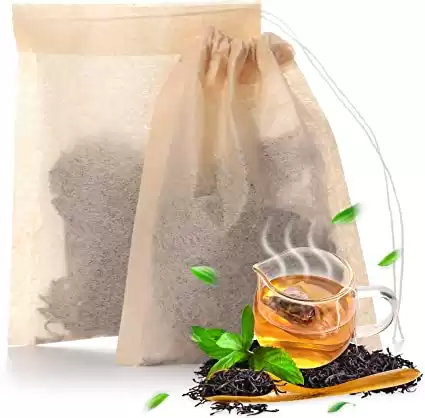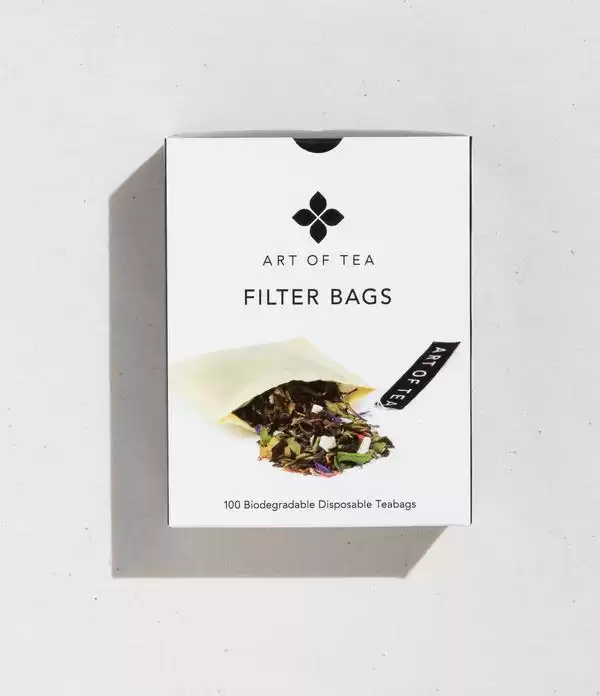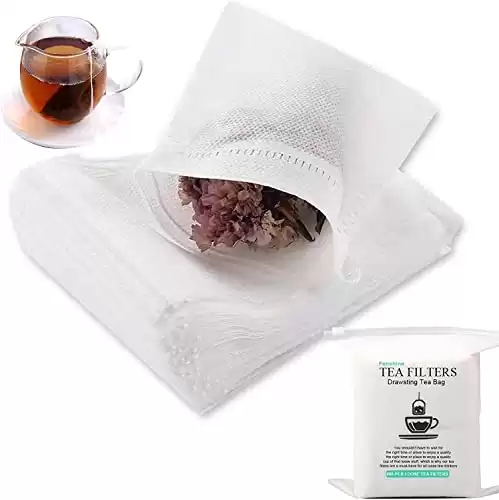It’s a great question. How long do tea bags last? I get asked this question often. While most everything we consume has an expiration date. Teabags have a few characteristics that make it not such a cut and dry answer. Do tea bags go bad, why and how does that happen? Can using an old tea bag harm you? Oh, and what about reusable tea bags?
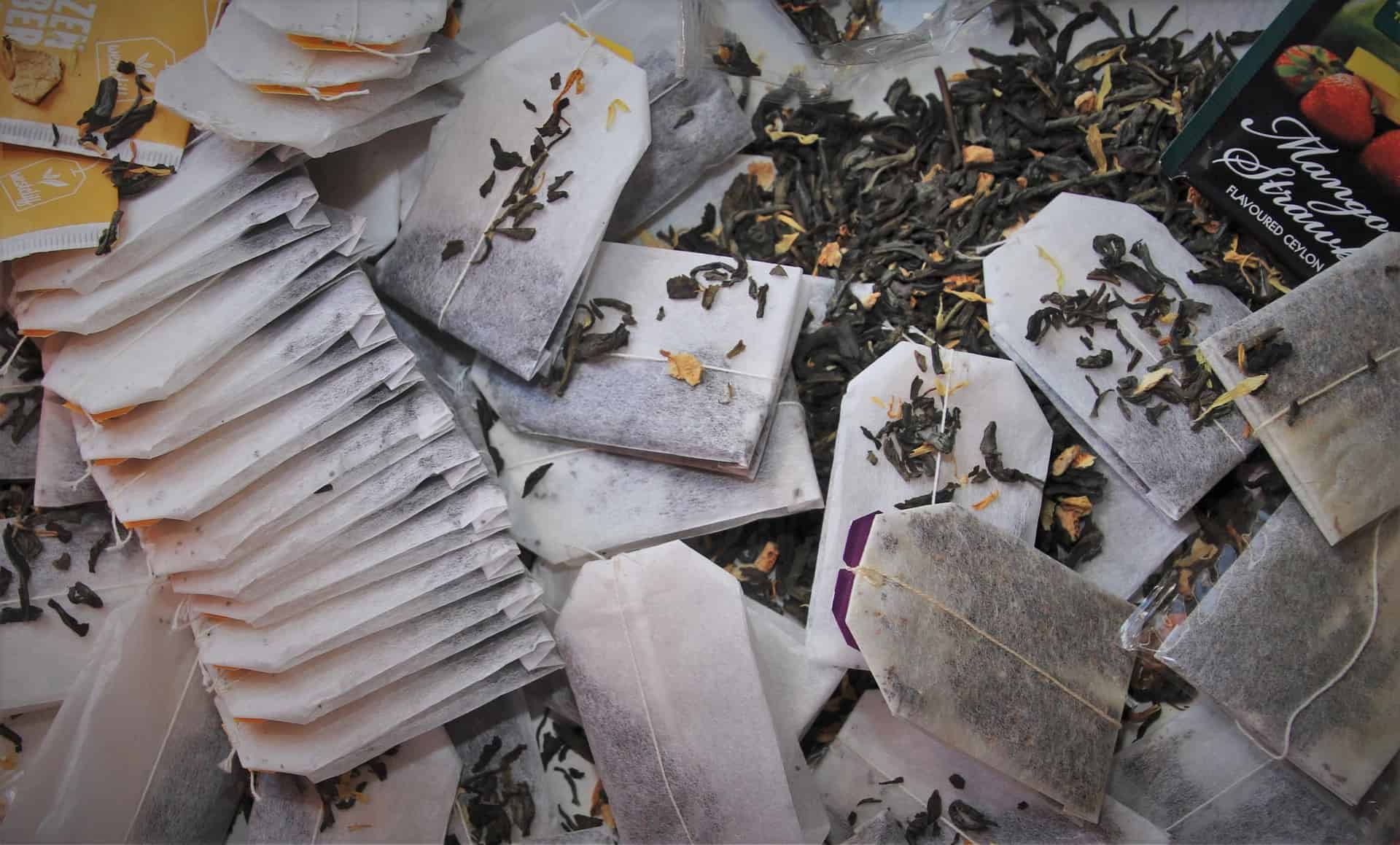
History of the teabag
I always like to start with a little bit of history on a subject. I find it interesting to know some facts before diving into a topic. I also find that there is always current and updated information. Americans tea bag usage is 98% while the UK stands a bit below the US at 96%
Do you think your tea tastes better in or out of a teabag? The current belief is that tea tastes better without the added tea bag. Back in the 12th century, the belief was you needed the tea leaves removed for great-tasting tea. Then there is the whole convenience and easier-to-clean notion of a teabag.
The first commercial appearance of the tea bag was in 1904. Thomas Sullivan, an American credited for bringing the tea bag to the world in 1908. It was an accidental discovery as Thomas used silken bags to deliver his tea to customers. The customers used the tea inside the bag to brew but complained that the silk was too thin. Our inventor, Thomas created the first purposeful tea bag out of gauze. But several years prior Roberta C. Lawson and Mary Molaren of Milwaukee filed for a patent for a “tea leaf holder”. The design (like Sullivans) was made of the same stitched mesh fabric.
The rectangle bag we see more commonly today was not created until 1944. Before 1944 tea bags were like sacks or “bags”. In 1952 Lipton tea created the flow-through tea bag. The bag had four sides and in 1992 Tetley introduced a round teabag.
After gauze, came paper teabags. The teabags are the same we see today. They came in two sizes and contained the familiar string with a tab at the end for easy removal.
Our teabag first began as a tea sack used for delivery. From a sack to a bag. From silk to paper. Now, what about those tags? Lipton Tea claims the credit for being the first to use those tags. Lipton used the tags for printing brewing instructions.
William Hermanson, one of the founders of Technical Papers Corporation of Boston invented heat-sealed paper teabags. William sold his patent to the Salada Tea Company in 1930.
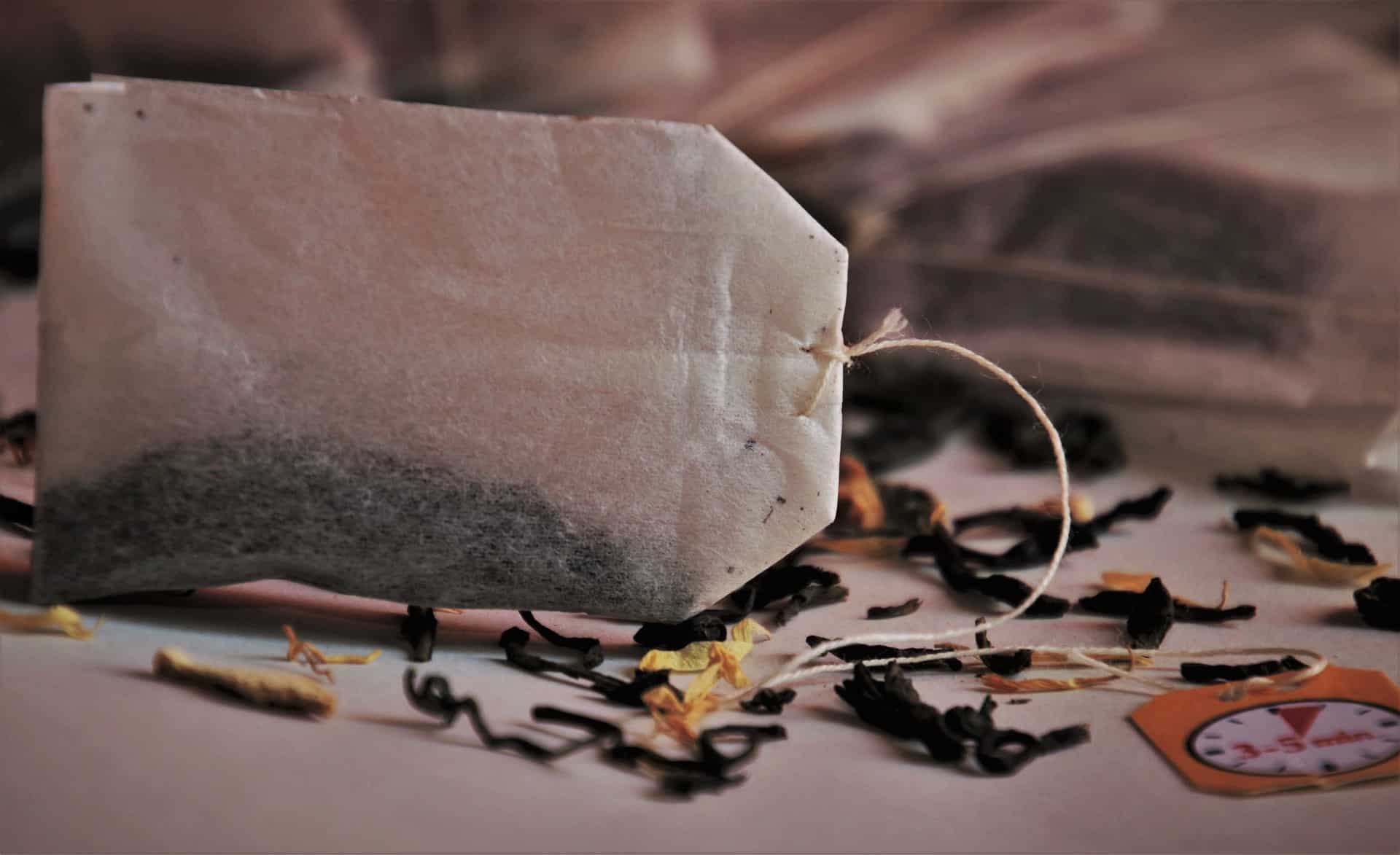
Let’s talk teabags
A concern would be the toxicity of the tea bag on how long do tea bags last. Another concern can be the process in which the tea bag is made and the materials used. Once heated the concern is if any toxins leach into the teacup? That is a lot to consider. Teabags should be used within a year. While they may be used after that time they may change the color or flavor of your tea. What we will look at is the bag itself, the material, and the sealant used. We can discuss what is the safest product to brew our tea in.
Paper – Teabag paper is made of cellulose and cotton. This type of paper is treated with a chemical to help hold the bag together. The chemical is epichlorohydrin. As the tea bag heats those chemicals can leak into your tea.
Plastic -Well, they are made of plastic and we all should know by now that hot water and plastic do not make a good outcome. They are also not biodegradable. The plastic used is a viscose rayon, PVC, thermoplastic, or polypropylene. The plastic or silken tea bags are made of nylon or polyethylene terephthalate. These materials are not biodegradable. But have a higher heat tolerance and do not leach as fast in the hot water. This in-depth study shows the concerns of plastic within tea bags.
Nylon – Nylon is not biodegradable. There is a temperature at which Nylon and plastic start to break down. That point is called the glass transition. For these materials, it’s generally around 169 degrees (for PET) And 116 degrees for nylon. which is much lower than the temperature I use for my teas. The boiling point of water is 212 degrees. I think you can see the problem with these materials.
Corn-based plastic bags – These are made from GMO corn and no one wants that. Some argue this bag can be biodegradable. It is not recognized as such and considering its source who wants to put it BACK into the earth.
Teabags are sealed with glue, staples, heat, sewn by hand or machine. This information is not shared by tea manufacturers. If you are curious about the structure of your tea bag, ASK! Still a very important part of the teabag. The sealant is something that needs to be considered.
Reusable tea bags – Most reusable tea bags come in shapes and sizes mostly made of silicon or metal. These are safe to use over and over again as long as they are properly cleaned after use. There is some concern again over the taste of teas that are infused with silicone or metal. That is not a safety concern, just a personal choice.
Dried tea leaves will not spoil. Keep the tea leaves stored away from extreme temperatures and sunlight.
Tea will lose flavor as they are exposed to the air and environment. The flavonoids will slowly start to degrade. They will degrade faster when exposed to the elements.
The exact answer to this question would matter on a few things:
- Expiration dates (if any)
- Filled or empty (what tea is inside)
- Materials (what is the teabag constructed of)
- Environment (where and how was the teabag created)
Teabags (as well as tea) should be stored in a cool, dark place. Make sure to store them away from any direct sunlight or heat sources.
At room temperature, tea bags should be considered expired after 1.5-2 years
You can extend the life of a teabag by storing it in an airtight container.
After the expiration date, a tea bag can still be used. If the teabag was being stored in the proper containers and environment.
Teabags (as well as tea) should be stored in a cool, dark place. Make sure to store them away from any direct sunlight or heat sources.
At room temperature, tea bags should be considered expired after 1.5-2 years
You can extend the life of a teabag by storing it in an airtight container.
Some Tea Bag Suggestions
If you can’t drink it then what can you do with it?
To a true tea connoisseur, a tea bag is out of the question. A tea bag goes against the grain of their idea of a great cup of tea. They believe the teabag restricts the natural beauty of the tea leaf’s flow and unravels in the hot water. They believe the tea bag can change the aroma and flavors of the tea. As mentioned earlier the appearance of the tea itself changes.
There is yet a good use for tea bags according to tea lovers. With the introduction of herbs and spices, they can be infused with tea. The tea bag makes it possible to measure the ingredients. Teabags can keep the ingredients contained inside the bag while brewing. Teabags also brew and still while allowing the flavor to escape.
I use tea bags for work and have found some amazing teas that can brew from a bag. I buy tea already bagged as well as have my own bags that I use to brew my single leaf teas. I also partake of several tisanes and a tea bag makes that more convenient.
And when you are done with your teabag here are some useful tips in upcycling them:
Hydrate your skin – place cooled tea bags on your skin to hydrate and calm. Tea contains antioxidants to soothe your skin. Green tea contains the most antioxidants.
Shoe odors – place expired DRY tea bags inside your boots or shoes. By doing this the odor inside the boot or shoe is absorbed by the tea in the bag.
Reduce eye inflammation – Brew your tea bags, cool and place under your eyes for a calming effect and reduce puffiness. You can also place the teabags in the fridge for a cooler approach.
Foot Soak – Add a couple of tea bags to your foot soak. This is a great way to add tea to your foot spa experience without trying to clean up loose teas and herbs.
Sunburn – Brewed tea bags can ease the inflammation of a sunburn. Again the antioxidants assist in the healing of the skin.
Deodorize – that stinky closet. Hang a few tea bags with a good scent in your smaller space and the air will smell better and your area will be deodorized naturally.
Resurface wood – brewed tea bags cooled and wiped on wood surfaces used to polish the surface. After application buff and your furniture will shine.
Gardens – throw used tea bags into your garden or compost pile to add beneficial properties to add to your garden’s soil.
Clean a greasy pan – Add a couple of tea bags to the pan, add water and let sit overnight. Grease and any stuck-on mess should be easier to remove.
Bath – Oh! expired or not, drop a couple of bags into your bath and enjoy the aroma. The tea will also aid the body and calm the soul.
Firestarters – this one made me laugh. So dry out your teabags super good. Dip into the wax and there you have it, a fire starter.
Bug bites – I actually keep a few of these in the bathroom in a zip lock bag. When there is a bug bit, just dampen the tea bag and apply. It really takes the itch off.
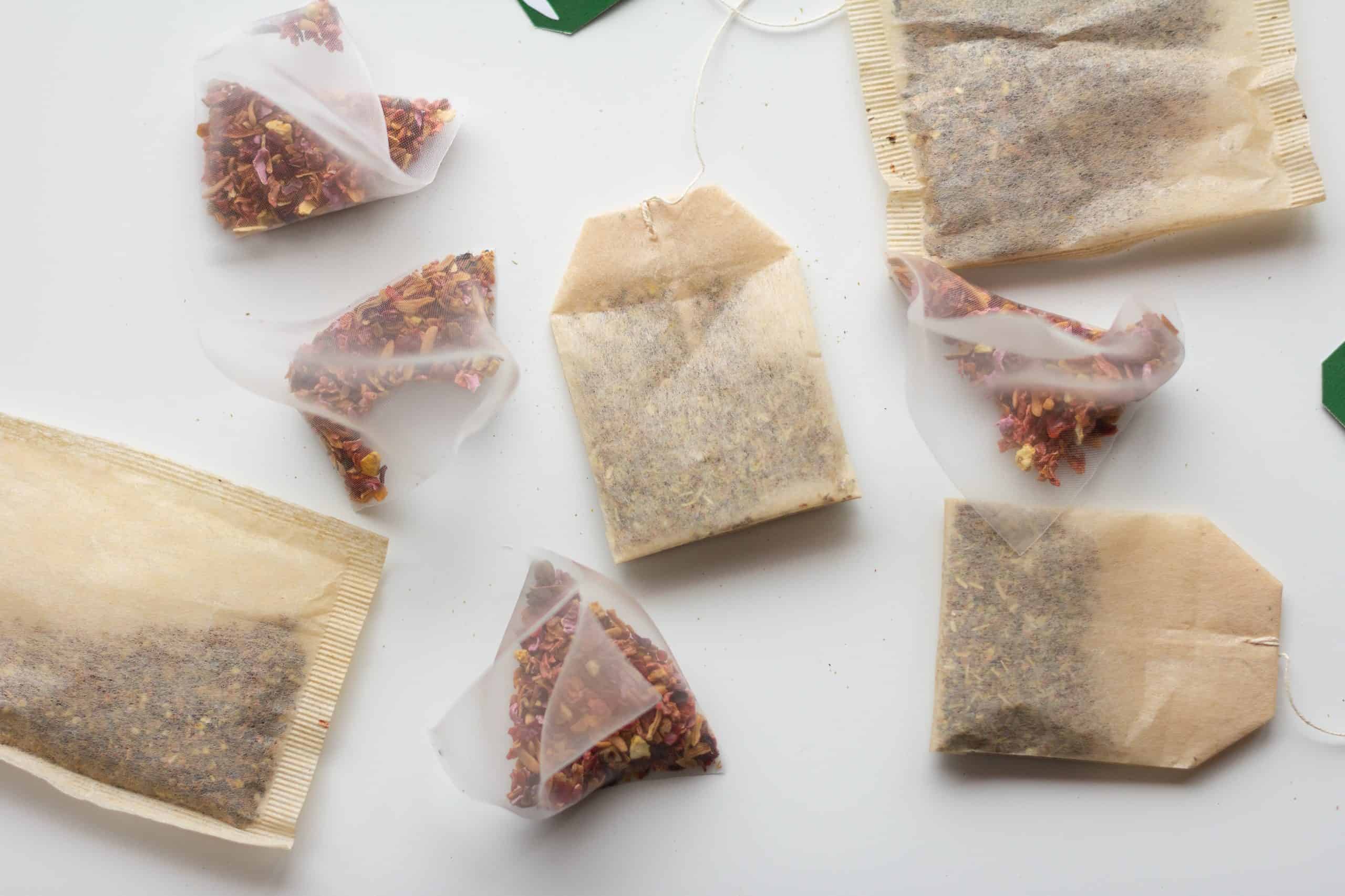
When it goes bad will you know?
Most manufactures of tea will say their main concern is not health but flavor. Drinking a tea past the expiration date can mean the tea will not taste at its best. The drier the leaf the better chance you have of a better-tasting tea past expiration.
It again depends on the way the tea was stored and was there a serious attempt to keep it away from the elements.
To know if your tea bags do go bad. First things first are to examine the bags and look for any bugs, wear and tear. Next, know the environment. Was the tea kept out of the sun in an airtight container?
Look – at the container and contents. Observe for rips, tears, or moisture
Smell – if it does not smell like “tea”. Throw it out. Avoid musty or mildew scents
Look – Look at the contents of the bad. Make sure nothing is in there that should not be (bugs).
Obvious signs – mold and mildew
Teabags (as well as tea) should be stored in a cool, dark place. Make sure to store them away from any direct sunlight or heat sources.
At room temperature, tea bags should be considered expired after 1.5-2 years
You can extend the life of a teabag by storing it in an airtight container.
You will find teabags using the expiration dates such as:
- Best by
- Best if used by
- Best before
- Best when used by
- Best taste date
These are not expiration dates. They are an estimate or suggested timeframe that the tea bags will be at their best.
Teabags will not “spoil” per sai, but they can break down and lose “flavor”. Not so much lose flavor but the contents inside may lose flavor. The teabag itself should have or add no flavor to the tea. I’m not convinced that a teabag has a flavor. Anything that is breaking down in your cup of tea may leave a taste or compromise the taste of your tea.
Do not store in the refrigerator or freezer. This won’t help preserve the life of your teabag. In fact, the opposite may happen if the tea bags collect any condensation or moisture.
Exposure to bugs may also damage or breakdown of the fibers of the teabag. I don’t think anyone wants to brew bugs in their tea unless purposely doing so. That subject is for another blog post.
Teabags that contains:
- Black, Iced tea brew – 18 months
- Cold-brew tea – 18 months
- Earl Grey or English breakfast – 18 months
- Powdered tea in tea bags – 12 months
- Green teas – 8-12 mo
- Herbal teas – 8-12 mos
- Loose-leaf – 6-12 mos
- Instant tea powder – 6 mos
The fermentation and roasting of
White and green teas rely on oils for their flavor. You will notice a difference.
Herbal teas depend on the herb. Considering most herbs used in tea bags are dried. Like spices, if kept dry and away from heat sources they stay away for longer.
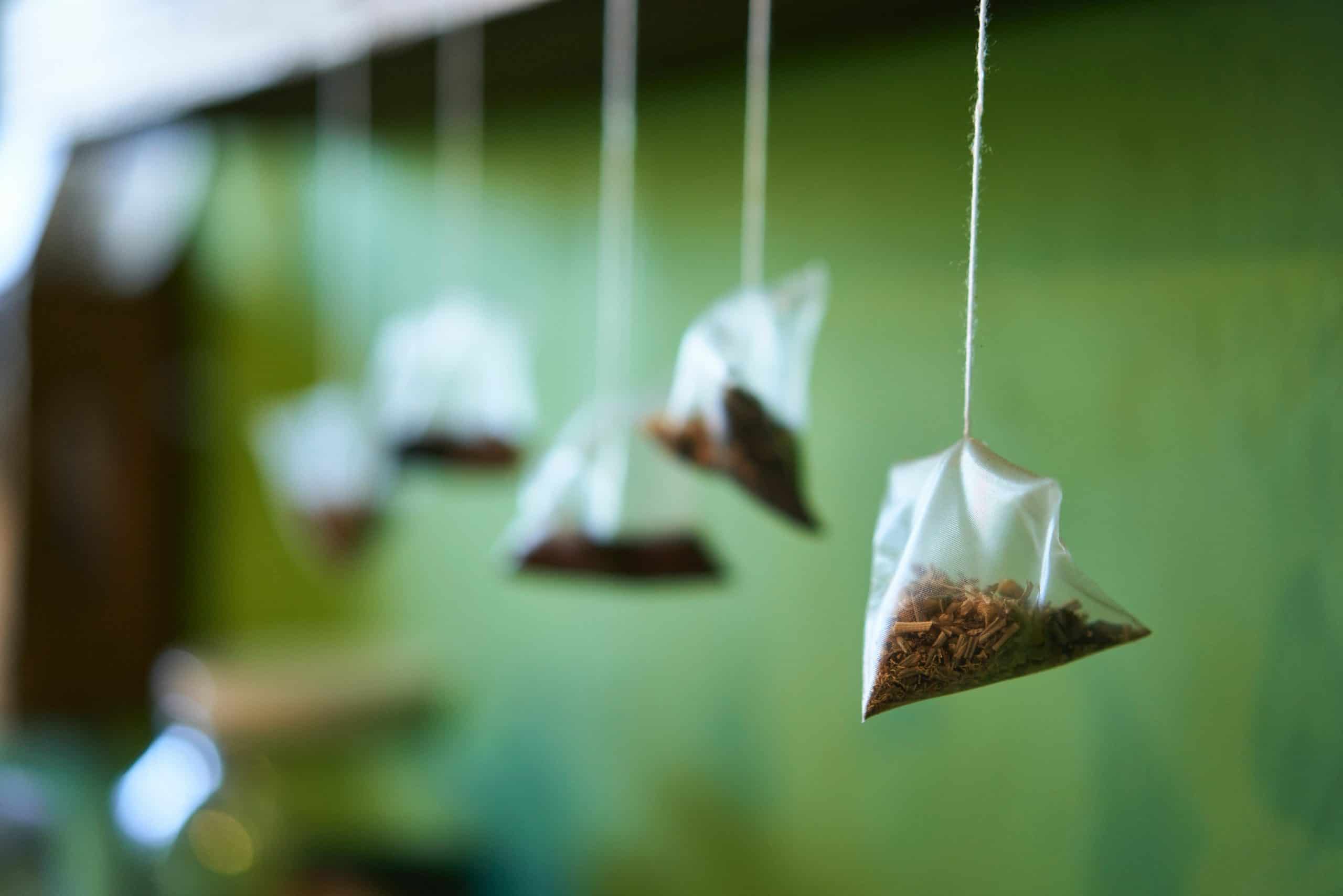
Conclusion
Tea can be perfectly safe to use after the expiration date. The tea may not taste its best after that date. As long as safety precautions are followed you can still enjoy a cup of tea from your expired tea bags.
No health concerns drinking past expired date. Teabags past their expiration should not make you sick. If the rules of storage are followed. The longer you keep them the more caution is needed.
To enjoy the freshness of the teas you want to enjoy, it’s always best to follow all the guidelines and safety procedures. Drink your teas as soon as you can because then you will get the full-bodied taste from each one.
I try not to buy more tea than I can consume, but we all know how that goes. Is my tea cupboard as full as yours? Probably!

